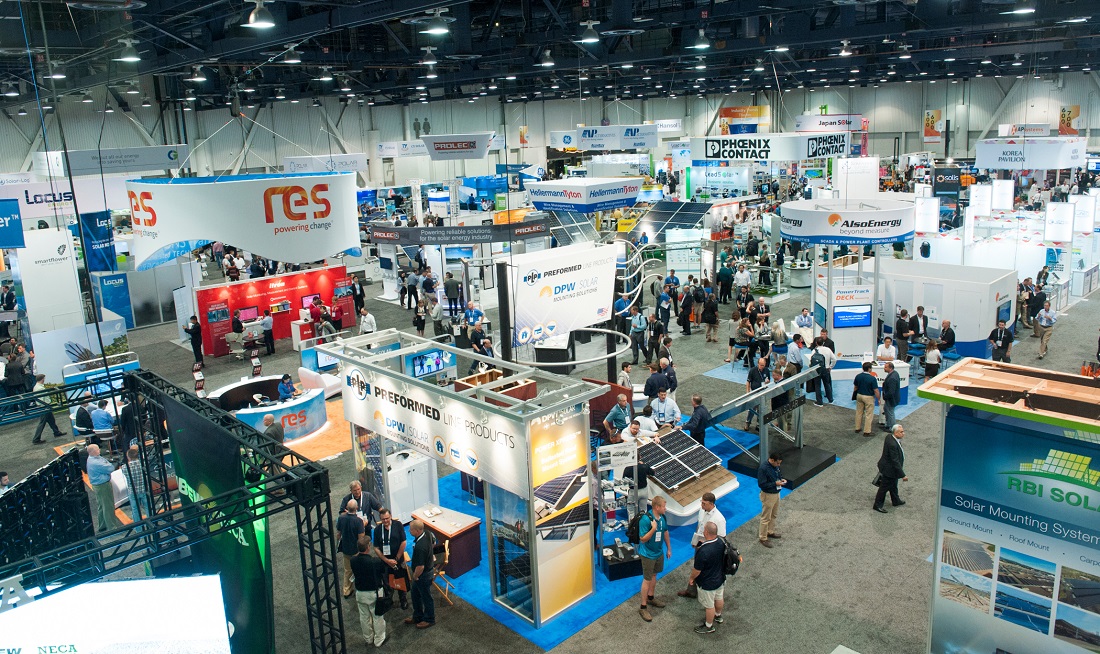
Solar panel manufacturers that fail to keep up with emerging technology trends will be under tremendous pressure in 2017, according to host of their peers at SPI 2016.
Speaking to PV Tech, a number of companies agreed that the perfect storm of low prices, an ongoing technology shift and poor finances will force some of the industry’s weaker players out the market.
Try Premium for just $1
- Full premium access for the first month at only $1
- Converts to an annual rate after 30 days unless cancelled
- Cancel anytime during the trial period
Premium Benefits
- Expert industry analysis and interviews
- Digital access to PV Tech Power journal
- Exclusive event discounts
Or get the full Premium subscription right away
Or continue reading this article for free
“The price drops mean different things to different companies,” said Zhenguo Lee, president of LONGi Silicon Materials whose subsidiary LERRi Solar is focused on pushing monocrystalline module technology. “Some want to dump inventory. In the last few weeks we have seen the prices drop by a significant percentage which was more than the expectation but we are still maintaining a 20% margin.
“Industry consolidation is not a bad thing, it's a good thing,” he added. “With technology improvement the advanced capacity will replace the behind capacity[sic], which again is a good thing for the industry. We believe in this environment we have to manage two things well, one is the technology and one is the market change,” he said explaining that company’s debt ratio is now under 40% and its 2006 production lines are still in operation today via a series of upgrades.
Lei Shi, general manager of the PV business at Chinese state owned company HT-SAAE concurred that technology and a sound financial footing were key.
“New technology is becoming even more mature now and in large-scale manufacturing. Those companies that do not have sufficient funds to modify and improve their process will face a crisis. This is normal for competition,” he added. “We have already experienced this in 2012/2013 and we will see this trend again in 2017. Companies, large or small, that do not follow the industry’s technological trends will face great difficulties,” he said.
Jeffrey Barnett, president of GCL SI Americas, stressed that consolidation was not necessarily a condition of ongoing success in the industry but was inevitable nonetheless.
“It's inevitable because there will be opportunity. GCL is adding new capacity which means better equipment and being able to move to higher efficiency technologies like PERC, or multi/heterojunction, bifacial panels etc, this is where the industry is going. Some of the consolidation opportunities are on the plain Jane multicrystalline 60- or 72- cell modules, there is enough of that in the world so we need to be pushing forward,” he said.
Bag of nickels
One external factor on prices has been anti-dumping tariffs but these are becoming a less significant brake on trade, enabling a larger dip in prices than had been expected from lost demand in China, Japan and the ITC-related pipeline stretch in the US.
“We're not going to see another anti-dumping tariff on top of what is already there because they have all figured out how to get around it anyway by switching production out of China,” said Charles Pimentel, COO and senior vice president of Solar Frontier Americas. “Now they are out of China they can drop the prices all they want once again. I think you'll see quite a bit of consolidation in the module business next year, you have to. They're sending a bag of nickels with every solar panel,” said Pimentel adding that it was somewhat buffered from that by its access to the Japanese market.
“In those market conditions we are a module manufacturer yes, but what we do have is the luxury of a good market in Japan where the level of quality and of our technology brings more value. So we're able to keep our volumes higher in Japan than we are around the world,” he said.
PV Tech’s invites you to a webinar hosted by Solar Media’s head of market research Finlay Colville to discuss the 2017 PV manufacturing landscape. There will be two sessions on the 28 and 29 of September to suit different timezones. Registration is free.





